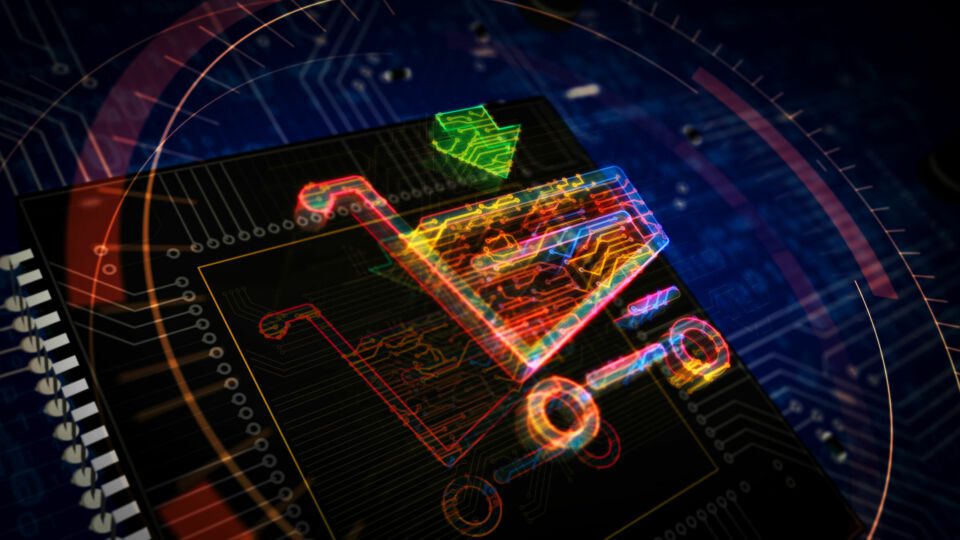Across the board, 2020 was a momentous year for us all. Retail has never faced so many changes and challenges. While physical stores have spent much of the year closed, the pandemic period has driven innovation and fueled a huge acceleration in what were just emerging trends at the start of last year.
Our Position on Retail
Too many businesses think about retail in terms of different channels, where online and physical retail are treated differently and then integrated. In reality, taking a consumer’s perspective of retail, channels are only discernible as different touch points along a pathway to purchase. Retail is everywhere. It’s a complex ecosystem of physical and digital spaces, whose purpose extends far beyond displaying and selling products and services. Retail is now a paradigm of many things merged — functional consumption, social interactions, fun, entertainment and learning experiences.
Here we share the top 10 innovations and themes that brands should be considering as part of their retail strategy moving forward.
Advertisement
- Agile Formats Connect to Customers
The “one-size-fits-all” retail strategy that helped companies scale up can no longer survive. It’s very hard for individual customers to emotionally connect to store experiences that try to serve the needs of every potential customer. There’s no question that individual stores need a greater degree of agility.
The increasing complexities involved in engaging with customers today demand that different store formats, and other retail touch points, integrate to become more purposeful to customer’s needs. They must complement one another within a larger unified retail ecosystem. Consider different “stores” (physical touch points) for different locations and customer needs. Uncover opportunities by exploring agile, smaller store formats that are specific in their intent. An entire store could be dedicated to activating a new product launch or a singular product experience. These formats could be temporary but highly focused, as research shows that messages that are simple, focused, clear and concise are more likely to make a lasting impact on customers.
2. Bring Your Own Device (BYOD)
Increasingly, customers are interacting with the store environments using their own smartphones. Customer behavior and acceptance of new technologies has been accelerated by the COVID-19 mindset toward touchless environments. Today, mobile technology needs to be integrated into the store experience and used to enhance the experience where possible, e.g. in-store live chat or AI chatbots can provide customers with access to information on their terms. Seeking information such as product specs, availability or making product comparisons should not require finding a staff member.
3. Transformative Experiences, Training and Learning
Positioning training and learning at the heart of the store experience could be the key to providing consistent transformative retail experiences. Experiences that give customers a greater understanding of something are memorable. While training is a more deliberate and engaging activity, learning can be delivered in many forms. It can be about understanding a technology, a specific device, developing a new skill or having a self-reflective experience.
Learning is best delivered by interaction and active participation — this is the most effective way to communicate a message to customers and the best way to allow customers to get the most out of your brand.
4. Activating Social Causes
An increasing number of consumers prefer to support brands that are vocal about social causes or have a philanthropic nature. Lots of brands are championing social causes, but we rarely see them translated into store experiences. Activating these initiatives in-store will educate and encourage customers to participate in your social causes, and in turn have positive brand benefits.
5. Local Retail
Local store formats should be a focus for future growth to meet specific local market needs. These stores may include a narrower product assortment or no products at all. They could focus on learning and community workshops. The role of the “local” store should shift to create a more intimate relationship with surrounding communities.
Click-and-collect should take place here, or local deliveries by a staff member who can establish a more personal relationship with their local customers. This is an opportunity to hire and provide training opportunities to local people. Such actions elevate the brand beyond a retail store and create deeper levels of trust and intimacy with consumers.
6. New Roles for Retail Staff
Staff and the “store” are intrinsically linked, and retail staff roles influence and respond to the retail strategy. What are their skill sets? What are their social, political and cultural viewpoints? The role of modern retail workers will shift dramatically to accommodate the emerging “Everywhere Retail” world. Stores no longer need people that just sell, they will perform multiple roles; fulfilling click-and-collect orders, performing livestreaming demonstrations or giving an onboarding tutorial to a customer at their home.
Staff may be dedicated to cleaning during open hours or monitoring entrances to ensure hygiene protocols are adhered to. The staff’s skills need to be paired with specific store formats. Hiring local to the store changes the relationship each store has with the community. Familiarity in our local shops builds trust and breaks down over-cautious COVID-19 mindsets. Some store locations may have a specific customer demographic that should be reflected in the staff, e.g. older staff may be better suited to introduce new technology to older customers.
7. Personalized Appointments
Providing one-to-one appointments can bring a level of customization to the store experience. Store appointments can be used to build a personalized experience based on a customer’s preferences. Understanding why someone is coming to your store allows you to show the right products and provide the best staff members with the necessary knowledge and skill set. Doing this in a private space is the ultimate personalized service.
Additionally, the focus on hygiene protocols can be approached by using appointments. The store can use timed appointments to control the number of people in-store, leading to a more dedicated form of customer service and also a more efficient store operation. You may have lower footfall, but your overall level of understanding, connection and service to customers is higher.
8. The Store as a Set
Stores can be used for livestreaming or as a backdrop for customers’ production of their own content. The biggest interaction with the digital world is through a social context. People want to connect with others and share content. The store should act as a setting that encourages media creation and sharing. This should be considered when designing experiential events or pop-up shops. Customers who use their own social media to interact with your space become brand ambassadors.
9. The Modern Tupperware Party
The retail landscape can extend into your customers’ homes. Your customers can become your biggest brand assets, showcasing your products and selling your services to their social networks. A person having a “party” can show everyone how their new product works. You can train your customers to do this, and incentivize them for it.
10. Delivery Service
Delivery has become a more important part of the shopping experience and should be a moment of brand activation. This should be part of the experience that is controlled and personalized to the customer as much as possible. It needs to be a diverse service that adapts to many needs, rather than a one-size-fits-all service.
What is considered frictionless differs between individuals and depends on what is being delivered, where and when. Localizing delivery operations is important, as it enables the provision of a more personal service. Additionally, delivery and onboarding should be integrated. Delivery services should not end at the customer’s door: staff making a delivery can help with product setup in their home, or via video call if social distancing is required. You are delivering information and relationships along with goods and services.
Download a copy of the full report, “Retail Insights 2021” here.

Ian Johnstonis the Founder of Quinine, a leading retail experience consultancy devoted to the power of design to drive innovation and growth. The consultancy helps brands create world-class social, cultural and commercial experiences that enrich and delight their customers’ everyday lives.









